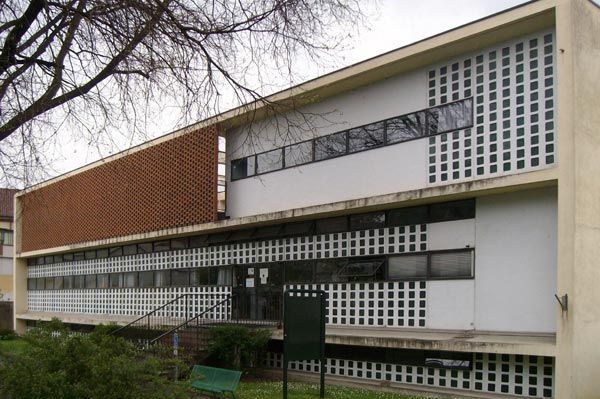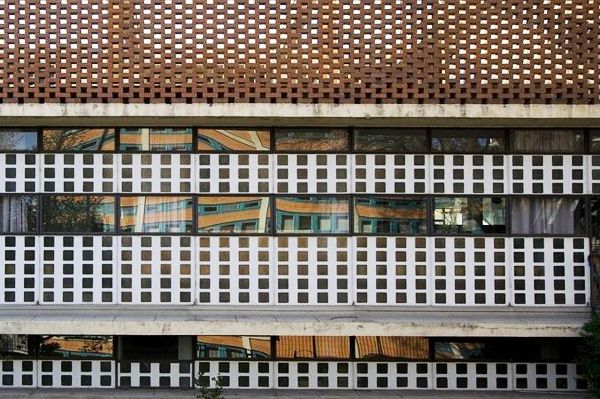1977.11.05
Beyond the Modern Movement
A conference held at Harvard University
John Hejduk's comments at the Forum discussion:
| |
I rather liked it. I liked it for many reasons, but the prime one was that it brought back one's past .... The past it brought back for me was William Wurster in the late '30s or '50s whom I always admired as an architect .... I think [the building] would not be passed over so lightly by those who are cognizant of an architectural history in America.
I would have thought that the reference would have been made that the old building is a very Italianate building and the new building is a very Italianate building. We both know that Kahn and Venturi, in the early 1950s, were roaming around Italy, and not only did they look at the old but they also looked at the new.
It appears that there is some kind of strange secret being kept among architects in America of where
Venturi comes from. We all know that Venturi comes from Ignazio Gardella, Gardella's early work in Italy in the early 1950s. Consequently, I find this an extremely Italianate building.
 
Ignazio Gardella Dispensario Antitubercolare Alessandria 1933-38
| |

But I thought that was the brilliant aspect of this building actually. Basically, he is making, I suspect,
a comment about the city ... that is, how a city is made. It is popular even in Europe these days to keep adding little pieces here and there. That is an aspect of the building that hit me when I saw it. It is not an
isolated building out in the middle of a field but is a city addition and also a cultural one.
| |
...I must say that this late work of Michael's disturbs me greatly, not only for the reasons that Bob Stern indicated about where it is going, but because I think that it is obvious where it is going, which makes Bob very happy. The Venturi building previously discussed is comparatively mild, modest, and conservative.
What disturbs me the most about Michael's building is that it provokes an image and a vision. (Some of you, my friends, have heard this before.) When I first went to Italy--Genoa--they had a heavy flood. We went out to visit the cemetery. On the hill, all the bodies, the coffins, the marble tombs were all mingled together and floating down that hill. I must say that this is the impression that I get from this particular building....
The other disturbing factor is that, simply, the house does not have anything to do with cubism. To suggest, Robert, that it might have something to do with cubism, I think is a heresy. In fact, I go back and wonder about what are authentic cubist roots. There's a place in Rumania or Yugoslavia, I think, or Hungary where there are buildings, and they begin to cut into these buildings and reveal other buildings of another time. This image is very interesting because apparently they are able to go through three or four layers on a facade. They strip the first layer and it is revealing of time in the past. What I suspect is occurring here is an accordion-like condition and there is a revealing of a past with no time.
I still see history in the linear sense as that condition of building upon something spatially. I would say that this is macabre to say the least. Now that Michael has shown the compression of time, he presents all the past simultaneously. He consequently will then imagine the future simultaneously upon the facade (which by the way intrigued me to no end if it didn't have an erosive smell of the graveyard).
First of all, of all six projects, I find the Rossi the most beautiful. And you might ask me to explain that and I can't explain it. All I can say is that it exudes something inexplicable which none of the other five projects do. There is also a sense of remoteness there. What is especially interesting to me is that all three of the last projects fundamentally deal with isolation and remoteness. What they celebrate, ultimately, is acts of privacy. In other words, that perhaps may be the issue today. What we are seeking or what our life depends upon is not a public condition but one of remoteness, silence, and above all privacy-even in a tight building that might exude a sense of a conglomerate of people. That probably is, in a way, the inexplicable of which I spoke above, the most cherished thing, as far as I am concerned, with all the forces that are upon us today.
But you can have your choice as to what kind of privacy you want. And I think that the Rossi building, in a way, might express the most private solution.
The privacy that you brought out in the Hertzberger project, which was interesting, was when you said, 'I don't know how it would be, I might have the most privacy in that condition or vice versa.' I think that we talked about it relative to Michael's project. I just get a sense of time in the Rossi project. The sense of time in comparison to the other two projects is two dimensional and not three dimensional.
Are you talking in pragmatic terms?
Okay, the sense of privacy you can have if you're on a ship with a lot of people and you are in remote waters. I can only give you an image.
|


